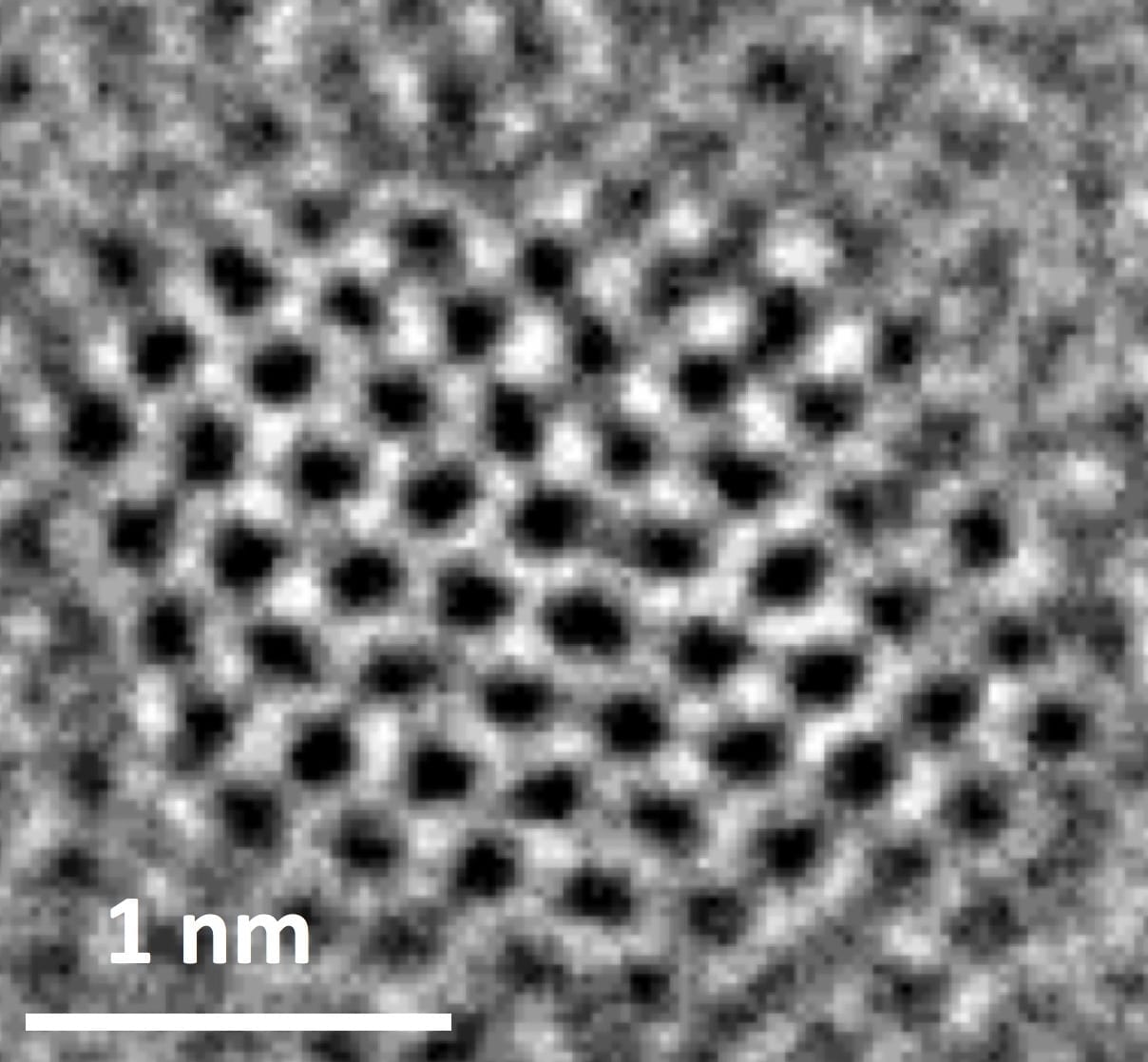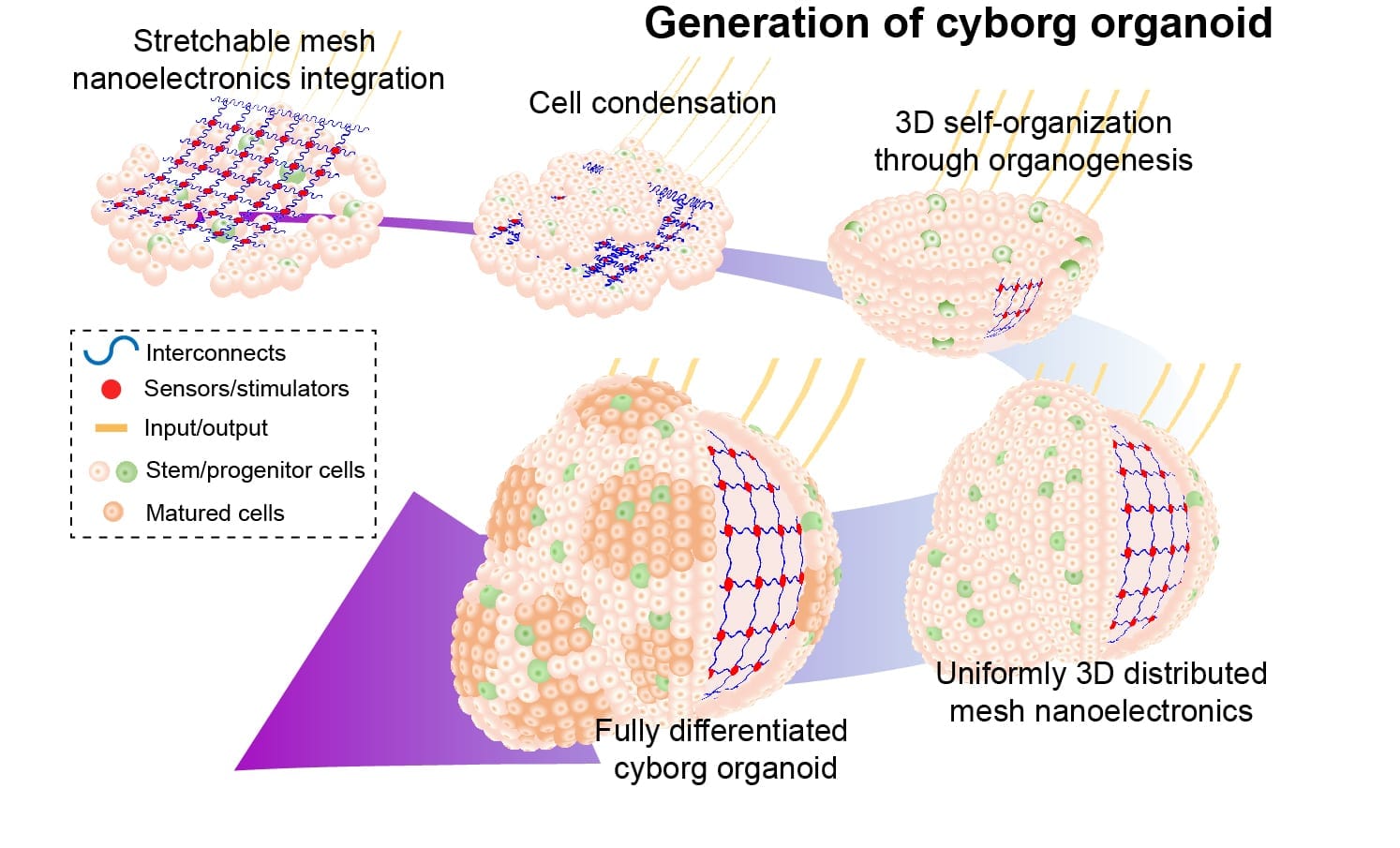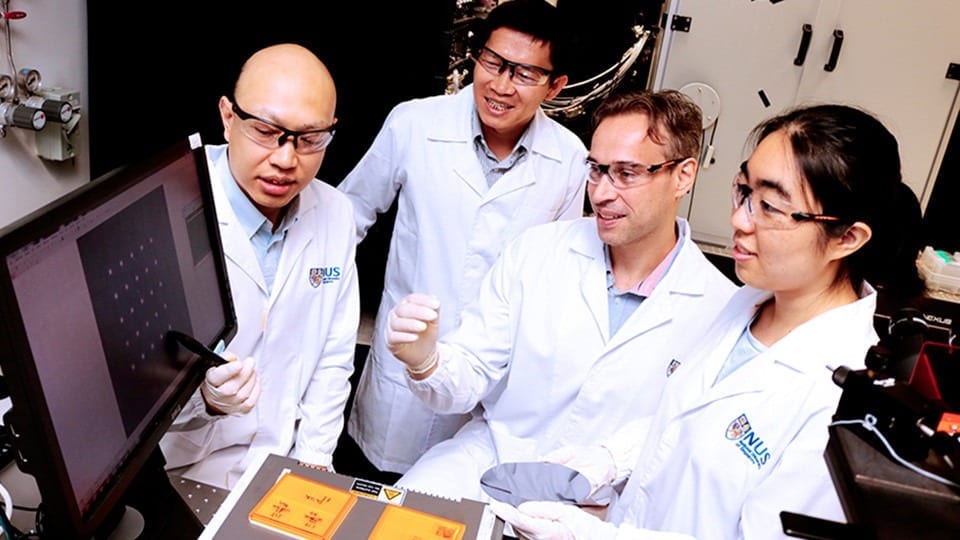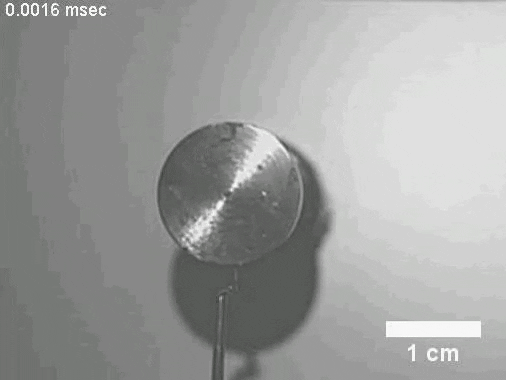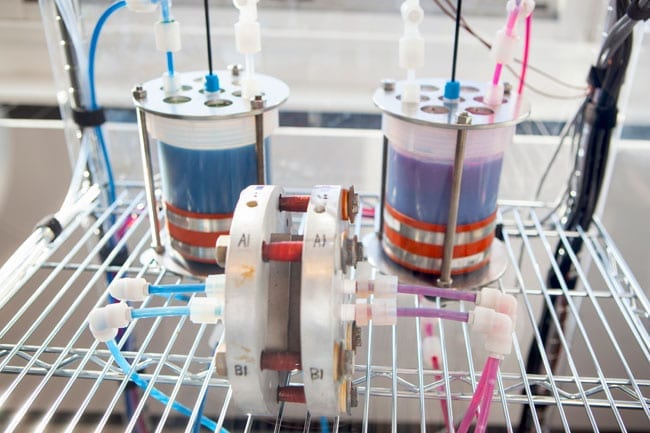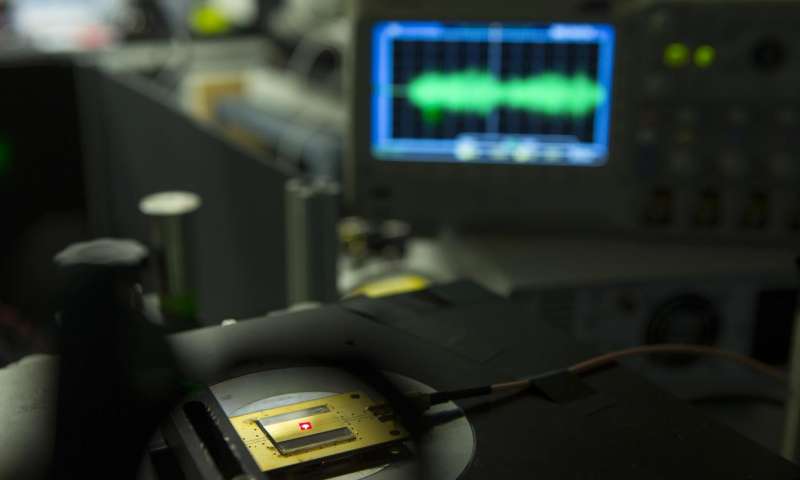
This tiny radio — whose building blocks are the size of two atoms — can withstand extremely harsh environments and is biocompatible, meaning it could work anywhere from a probe on Venus to a pacemaker in a human heart. (Photo courtesy of Eliza Grinnell)
Radio is made from atomic-scale defects in diamond
Researchers from the Harvard John A. Paulson School of Engineering and Applied Sciences (SEAS) have made the world’s smallest radio receiver – built out of an assembly of atomic-scale defects in pink diamonds.
This tiny radio — whose building blocks are the size of two atoms — can withstand extremely harsh environments and is biocompatible, meaning it could work anywhere from a probe on Venus to a pacemaker in a human heart.
The research was led by Marko Loncar, the Tiantsai Lin Professor of Electrical Engineering at SEAS, and his graduate student Linbo Shao and published in Physical Review Applied.
The radio uses tiny imperfections in diamonds called nitrogen-vacancy (NV) centers. To make NV centers, researchers replace one carbon atom in a tiny diamond crystal with a nitrogen atom and remove a neighboring atom — creating a system that is essentially a nitrogen atom with a hole next to it. NV centers can be used to emit single photons or detect very weak magnetic fields. They have photoluminescent properties, meaning they can convert information into light, making them powerful and promising systems for quantum computing, phontonics and sensing.
Radios have five basic components — a power source, a receiver, a transducer to convert the high-frequency electromagnetic signal in the air to a low-frequency current, speaker or headphones to convert the current to sound and a tuner.
In the Harvard device, electrons in diamond NV centers are powered, or pumped, by green light emitted from a laser. These electrons are sensitive to electromagnetic fields, including the waves used in FM radio. When NV center receives radio waves it converts them and emits the audio signal as red light. A common photodiode converts that light into a current, which is then converted to sound through a simple speaker or headphone.
An electromagnet creates a strong magnetic field around the diamond, which can be used to change the radio station, tuning the receiving frequency of the NV centers.
Shao and Loncar used billions of NV centers in order to boost the signal, but the radio works with a single NV center, emitting one photon at a time, rather than a stream of light.
The radio is extremely resilient, thanks to the inherent strength of diamond. The team successfully played music at 350 degrees Celsius — about 660 Fahrenheit.
“Diamonds have these unique properties,” said Loncar. “This radio would be able to operate in space, in harsh environments and even the human body, as diamonds are biocompatible.”
Learn more: World’s smallest radio receiver has building blocks the size of two atoms
[osd_subscribe categories=’nanoelectronics’ placeholder=’Email Address’ button_text=’Subscribe Now for any new posts on the topic “NANOELECTRONICS”‘]
Receive an email update when we add a new NANOELECTRONICS article.
The Latest on: Nanoelectronics
[google_news title=”” keyword=”nanoelectronics” num_posts=”10″ blurb_length=”0″ show_thumb=”left”]
via Google News
The Latest on: Nanoelectronics
- Georgia Tech group create world’s first graphene-based semiconductoron April 26, 2024 at 10:13 am
A group of researchers at the Georgia Institute of Technology (Georgia Tech) have created the world’s first functional semiconductor made from graphene, a development that could lead to advanced ...
- Three McCormick Faculty Elected to American Academy of Arts and Scienceson April 26, 2024 at 10:09 am
Wei Chen, Mark C. Hersam, and Uri J. Wilensky are among the 250 members elected in 2024, and six from the University. They are recognized for their excellence and commitment to uphold the Academy’s ...
- Novel Anode Material Boosts Lithium-Ion Battery Performanceon April 25, 2024 at 9:16 am
Dr. Han Joong Tark and student researcher Lee Do Geun at Korea Electrotechnology Research Institute's Nano Hybrid Technology Research Center have devised a novel manufacturing method for ...
- Mechanical strain control of quantum transport in graphene enables new class of nanoelectronic deviceson April 23, 2024 at 5:00 pm
More broadly, the ability to control quantum transport phenomena through mechanical deformation could impact the development of low power nanoelectronics and quantum computing hardware. Possibilities ...
- Carbon Nanotubes Market Size, Opportunities, Share, Growth, Regional Trends, Key Segments, Graph and Forecast to 2028on April 23, 2024 at 10:35 am
Carbon Nanotubes Market by Type (Single Walled & Multi Walled), End Use Industry (Electronics & Semiconductors, Chemical Materials & Polymers, Structural Composites, Energy & Storage, Medical), Method ...
- Nanofluidic memristors compute in brain-inspired logic circuitson April 22, 2024 at 7:29 am
Building artificial nanofluidic neural networks could provide a closer analogy to real neural systems, and could also be more energy-efficient. A memristor is a circuit element with a resistance (and ...
- Purdue, industry partners convene second CHIPS summit in D.C. with top international and national leaderson April 19, 2024 at 10:06 am
WEST LAFAYETTE, Ind. — More than 330 representatives from industry, government and academia gathered in person and online Wednesday (April 17) in Washington, D.C., as Purdue University and an alliance ...
- Innovating the Future: Highlights from ISVE VLSI's International Conferenceson April 18, 2024 at 7:14 am
These conferences are chaired and organized by well-known figure Dr. Vijay Nath, Birla Institute of Technology, and executive member of ISVE, Ranchi ...
- Mark Hersam Wins 2024 Mid-Career Research Awardon April 14, 2024 at 5:00 pm
Hersam, Walter P. Murphy Professor of Materials Science and Engineering and chair of the Department of Materials Science and Engineering, is an expert in nanomaterials, nanomanufacturing, scanning ...
via Bing News


